I must admit that I had a fairly long internal conversation with myself about how and if at all I could be writing about the L30 one design racer/cruiser. Why? Because mentioning the L30 is inevitably and immediately triggering a notice about her “father”, Rodion Luka. He is Ukrainian and that is the boat´s origin. Faster as you might think you are talking about the war, Russia, Ukraine and all that comes with it. I don´t want this. Not because I haven’t got an opinion about this topic (in fact I am a very political person), but because I am convinced that there are better places to talk politics than boats. I strongly believe that sports, sailing in particular, should be bringing people together, uniting them in their passion – not dividing them.
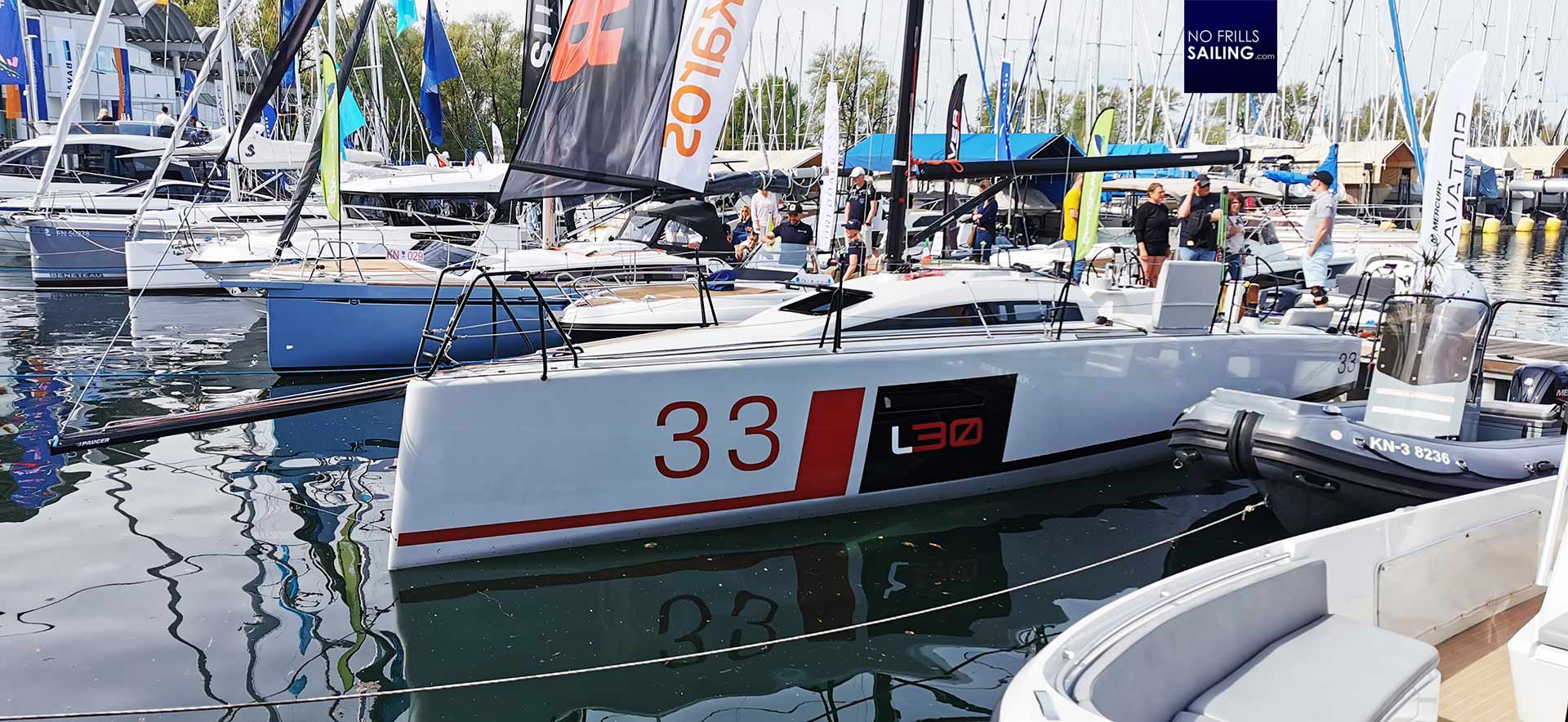
And so I was very happy witnessing during the last spring boat show at Lake Constance that on the very first day of the show the crew of the exhibited L30 one design boat decided not to politicize their boat (or to have their boat politicized by others) and refrained from flying the Ukrainian flag. There are truly other places and above all better suited occasions to argue and discuss. Seeing this, I felt much better going over to my exhibiting neighbours, boarding the boat, greeting Rodion and his mate. We were truly having a good time aboard, getting to know the guys behind it and – the reason for my visit – getting to know a bit the boat itself. So welcome to the L30 one design walkthrough.
Rodion Luka´s vision
Rodion Luka is a versatile and successful sailor. He is an Olympic silver medalist, second place in 2004 Olympics for his country Ukraine. He also raced for Team Russia in the Volvo Ocean Race of 2008/09 as helmsman and founded a sailing/yachting school in Kiev. Rodion started the L30 one design idea working together with Slovenian designer Andrej Justin. The idea was to come up with a powerful 30-feet racer-cruiser that would bring together high performance with cruising comforts and trailerable versatility.
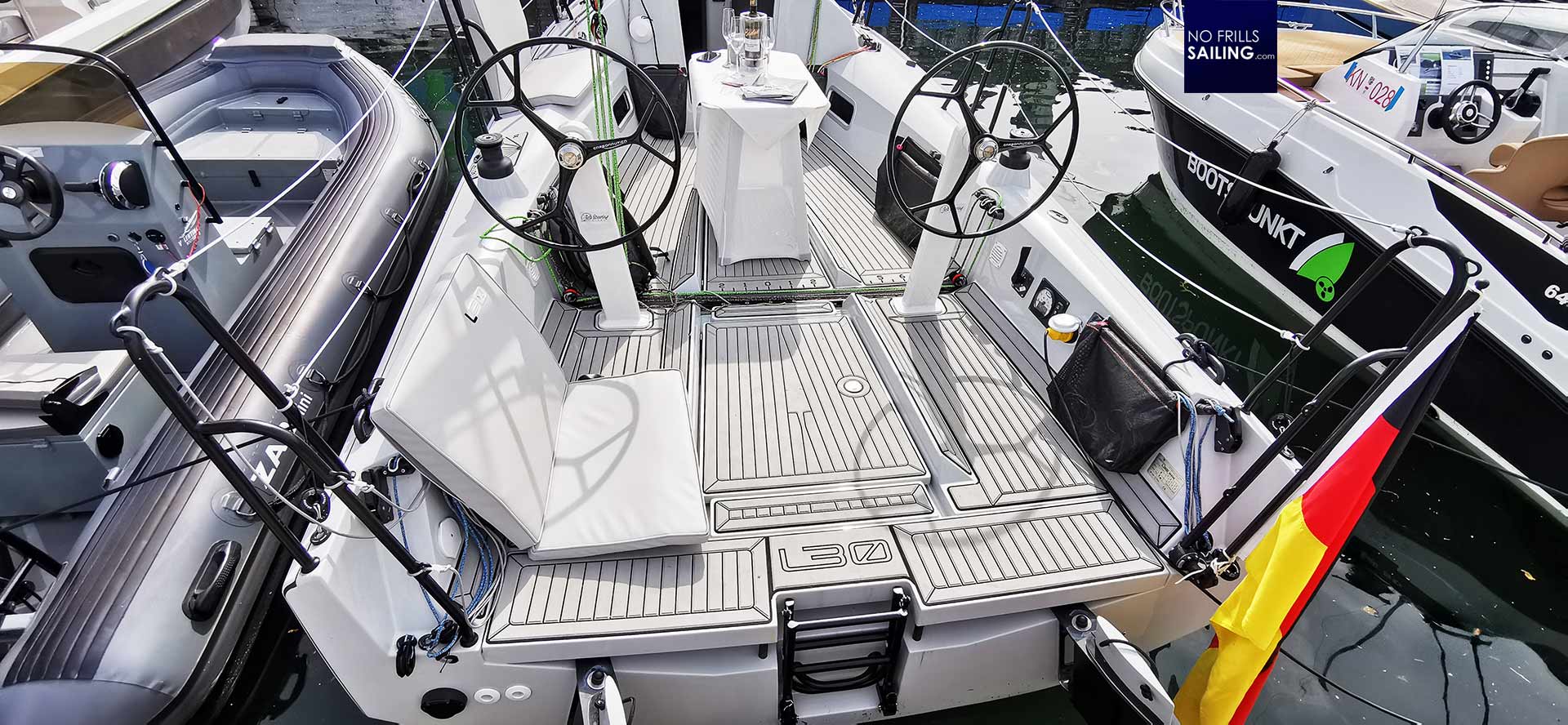
And indeed, the boat looks sleek and fast, a small boat ticking a lot of boxes: Double wheel steering, lifting keel, racing fitting and trimming equipment combined with cruising amenities. I am invited and warmly welcomed by Rodion and Jochen Beetz, German importer of the L30 one design boat. 30 foot is a great size for a boat: Starting prices are reasonable, the boats are small enough to not cause much trouble and follow-up costs in maintenance and the handling of a 30-footer is easy. A great size for inshore and coastal use-cases and a perfect size for daysailing or main use as a weekender.
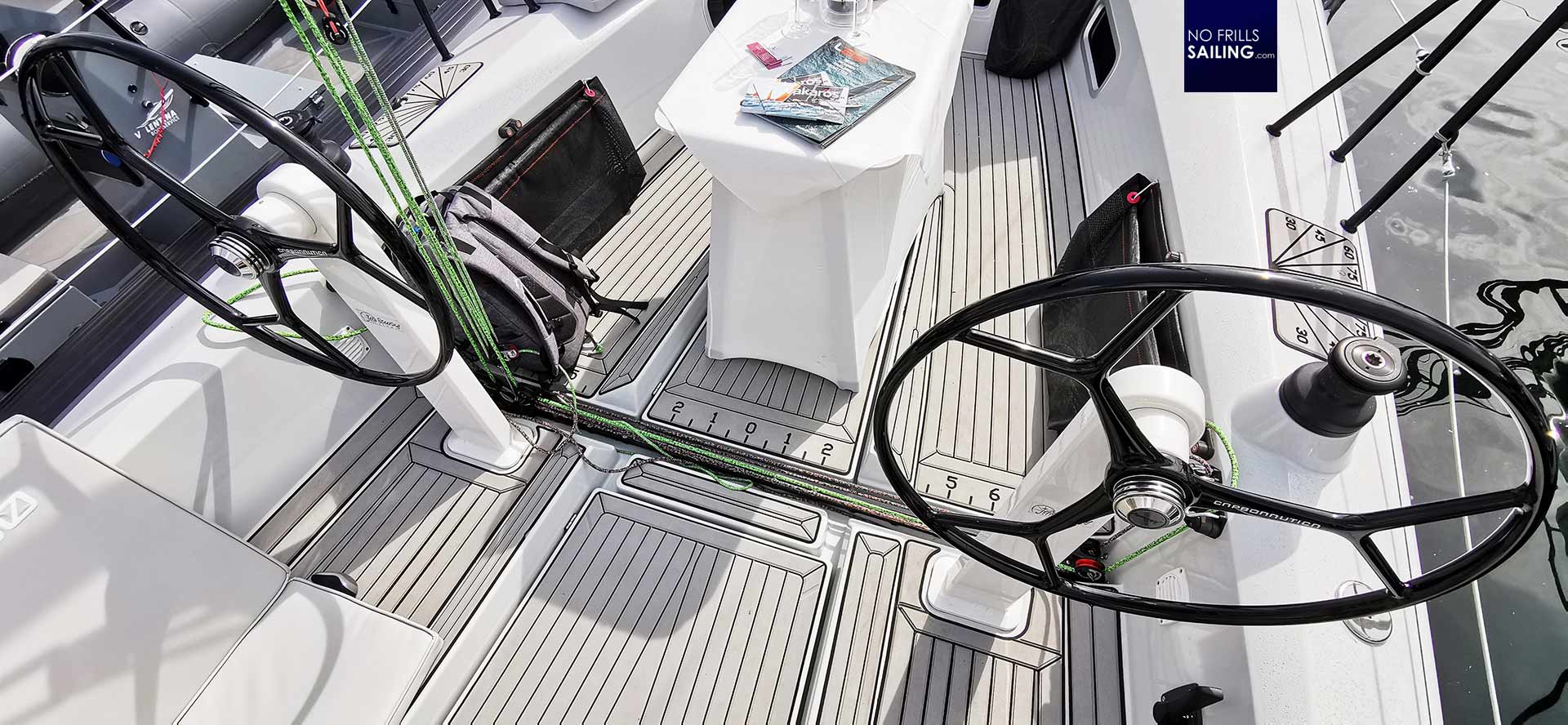
But the L30 wants to be more. This is clear just from the outset: Reading into the history of that boat, you will surely notice that World Sailing discussed using the L30 one design boat as their solo/double handed mixed offshore World Championships and the L30-class worldwide is very busy establishing a racing community with pros and amateurs providing attractive events. The boat is certainly aimed at sportive sailors willing to sail fast, constantly push for speed and fine tuning the sails.
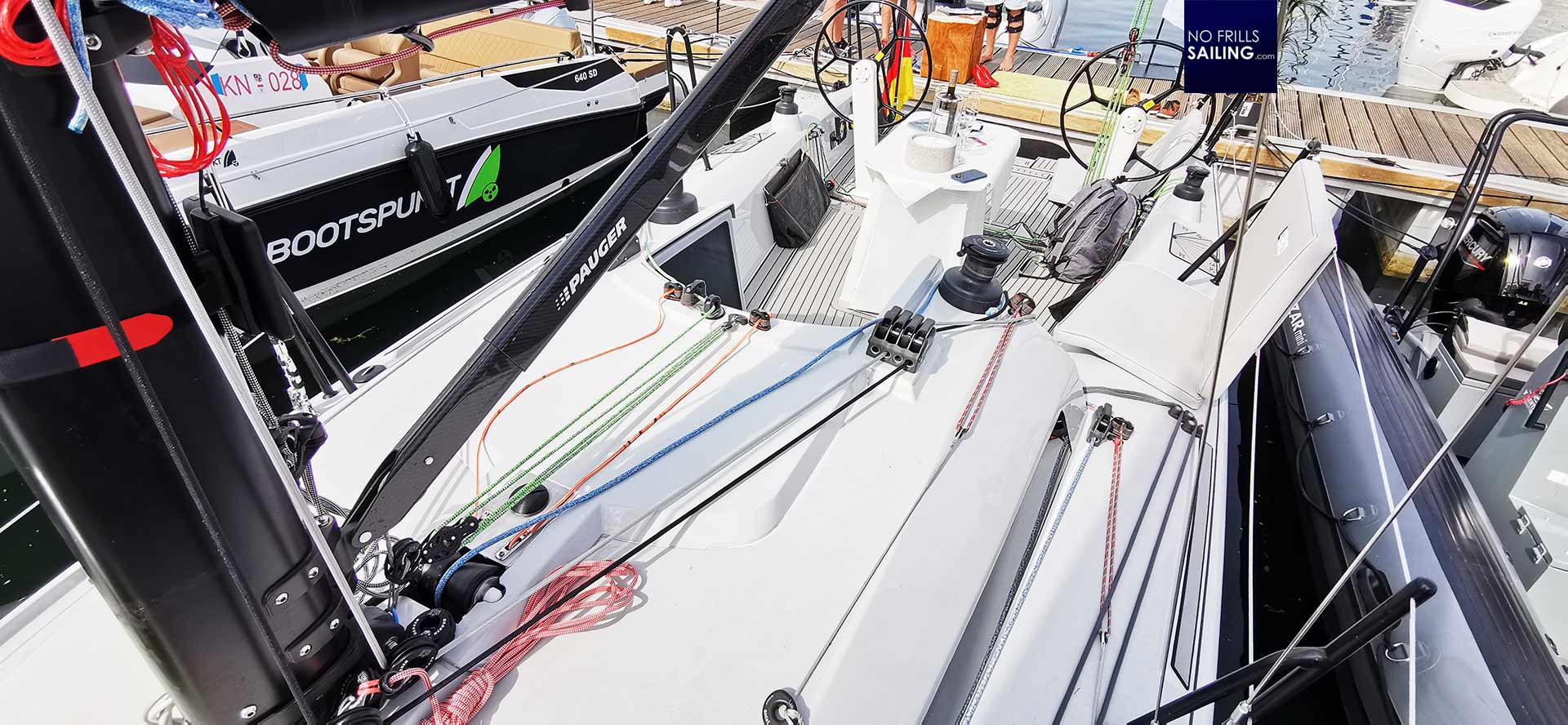
In that, I felt at home: A bit like on my First 27 SE I instantly recognized the fine variety of trimming instruments on the L30 like 3D Jib inhaulers and a nice wide keyboard of jammers right on top at the entryway down. I would say the L30 is more suited for crewed racing, also taking into account her comparatively slim width of 2.54 meters with a hull length of 9.25 meters (compared to the First 27 SE (with a hull length of 7.99 meters and 2.54 width). Meaning a slim, light boat (she weighs in only 1.800 kilograms with a ballast of 790 kilograms at 1.88 meters draft.
A boat for regatta-cruising
In that, the L30 is perfect for a dedicated crew, being a family, a band of sailing brothers or corporate sailing. Many details on the boat I found interesting, such as the long bow sprit (of course carbon-made) used to attach the Code 0 or Gennaker light wind sails, which is not fixed by is retrievable. But the bowsprit, other than on the First 27 SE for example, won´t enter the hull´s interior but is running in a dedicated compartment underneath the deck, completely separated from the internal cabin. This is great to avoid leakage and water inside the boat.
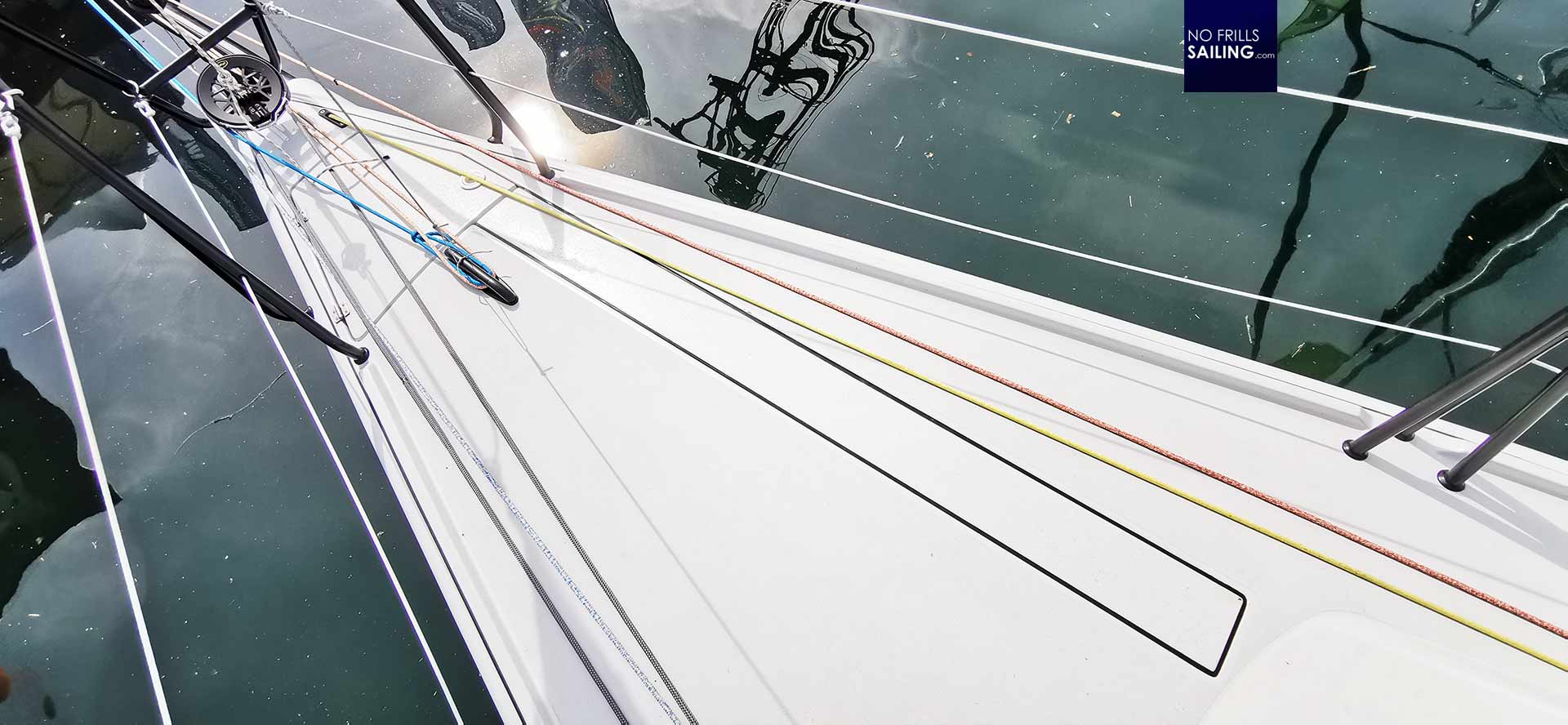
The L30 one design is made with modern infusion technique and from what I could see the production quality easily meet the demands of demanding customers. The boat can be equipped with a standard Diesel engine or electric propulsion which both go on a two-blade folding propeller on a saildrive. Depending on the use-case and sailing area, both will have their pros and cons.
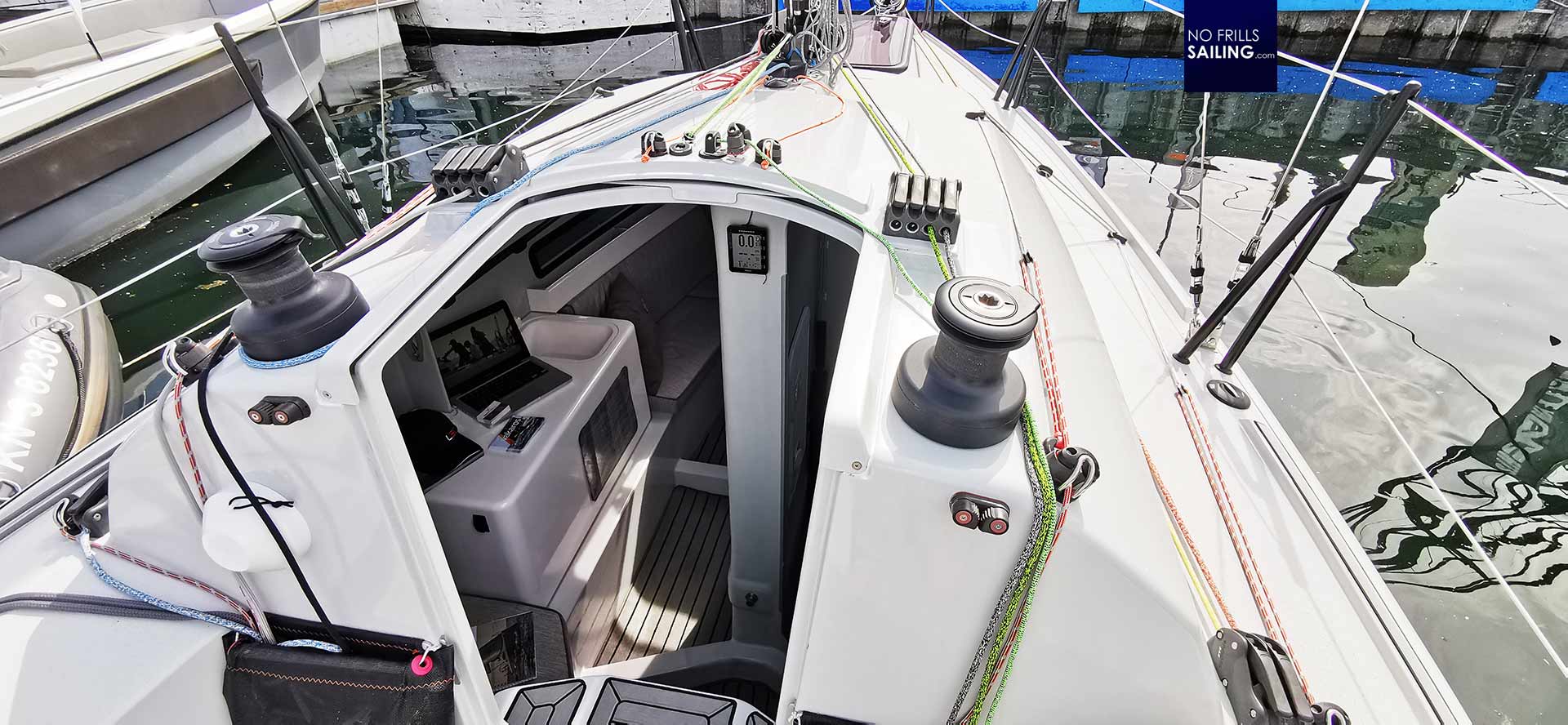
I really couldn´t spot any flaws, no excessive wear and tear (the boat exhibited was a used one as, like it is with the rest of the boating industry too, there are literally “no” new boats available) and no stupid things. Except for, maybe, the main jammers to both sides of the deck through which, for my taste, the lines ran so much angled that I would have placed the jammers turned inward to take on and let out the lines without that much friction. But that´s just a small detail.

I like the little nice and practical features which reminded me of the Seascapes, like the lifting rudders which can be taken out of their bearings with one hand. The boat, from the outside, makes a pretty nice impression, everything is where it is supposed to be. It looks racy and aggressive, the mast has a considerable rake. Looking at the numbers, the boat promises to be a good performer and as the website states, it has been tested thoroughly since 2015 with achieving 24.7 knots in a 34 knot breeze. Well …
Cruising amenities
The L30 one design is a racer/cruiser and judging by pictures on the internet enjoys an ever-growing fanbase of owners. But I would reckon that most owners aren´t that much focused on racing this boat. It´s maybe a nice mixture of having a race-ready and capable sailboat for regattas and cruising comforts for a couple, friends or a small family that loves to sail fast – just as I did with my GEKKO. And here the surprising part of the walkthrough begins: This boat is really something different.
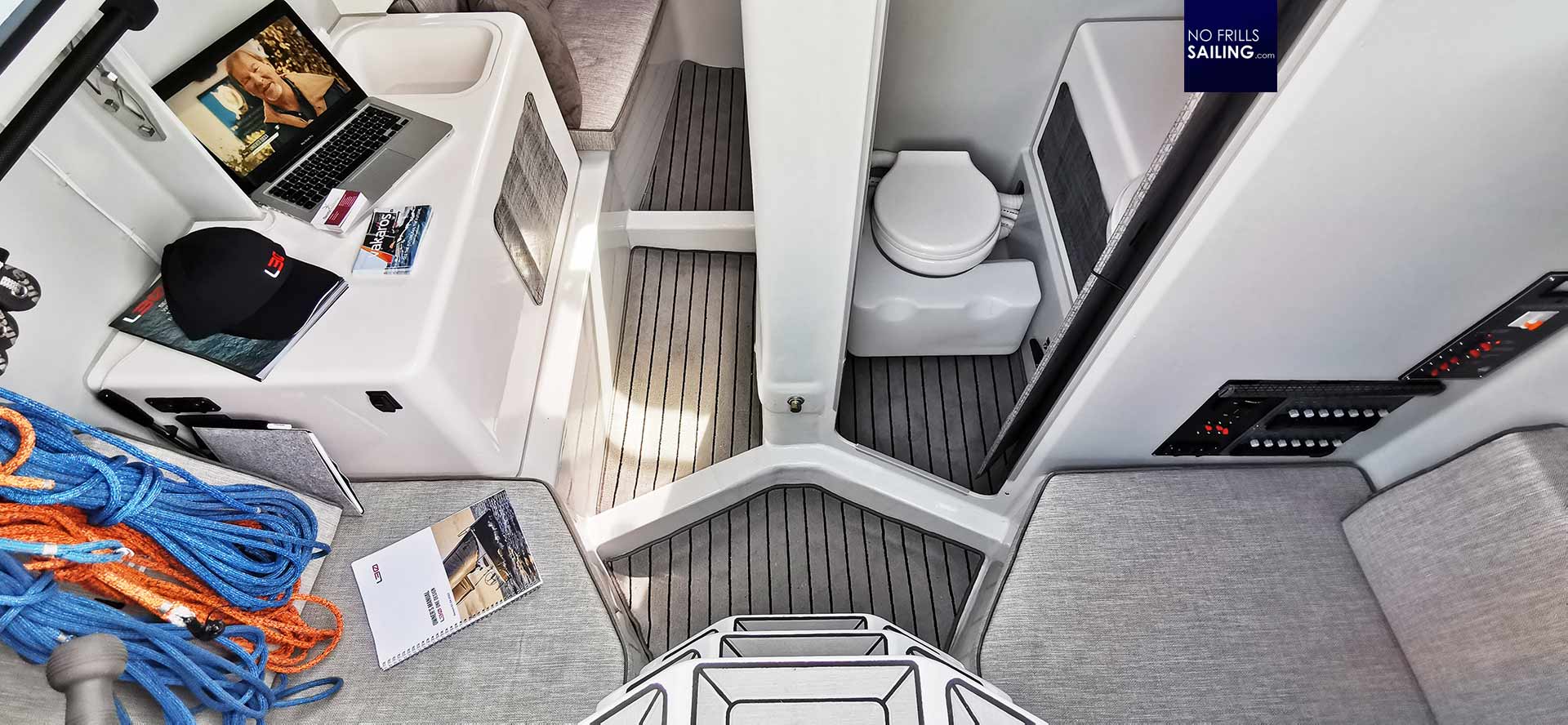
At first, when I went down on the entryway, I noticed that for the interior the designers chose to skip the classic saloon. There simply is none. Going down one has the small galley to port side and enters directly into the head of the boat to starboard side. Two pilot berths left and right offer a place to sleep for one adult each. Leaving the galley behind and going forward, one enters the forepeak.
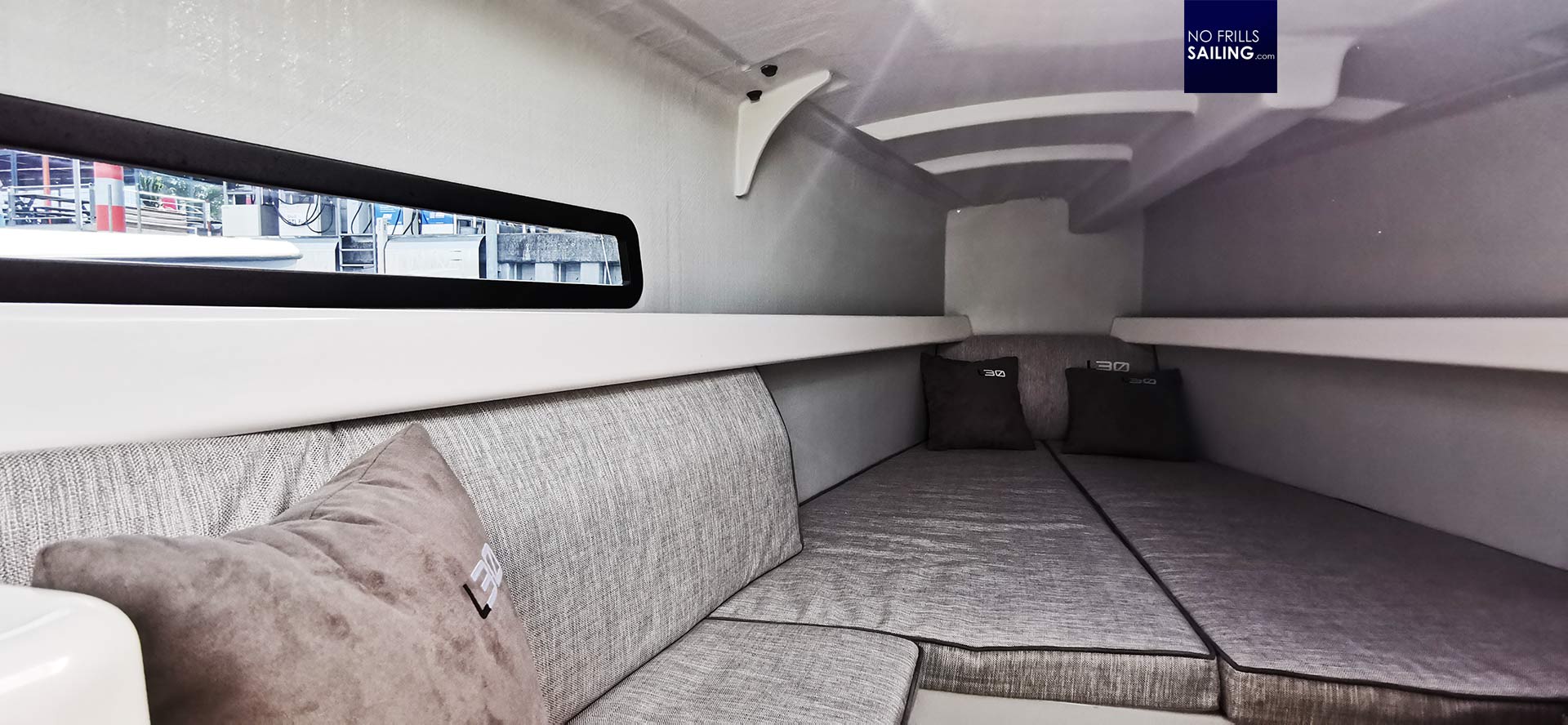
A small sofa to port side may be used to getting dressed and undressed or, in harbor or at anchor, sit down, reading a book talking to the boat´s chef acting in the galley. A large V-berth in forepeak is large enough to offer two adults a good night´s sleep. I loved the natural light that enters the fore cabin through two hull windows. As the bowsprit is outside the interior, this is a sealed of watertight place. Well done!
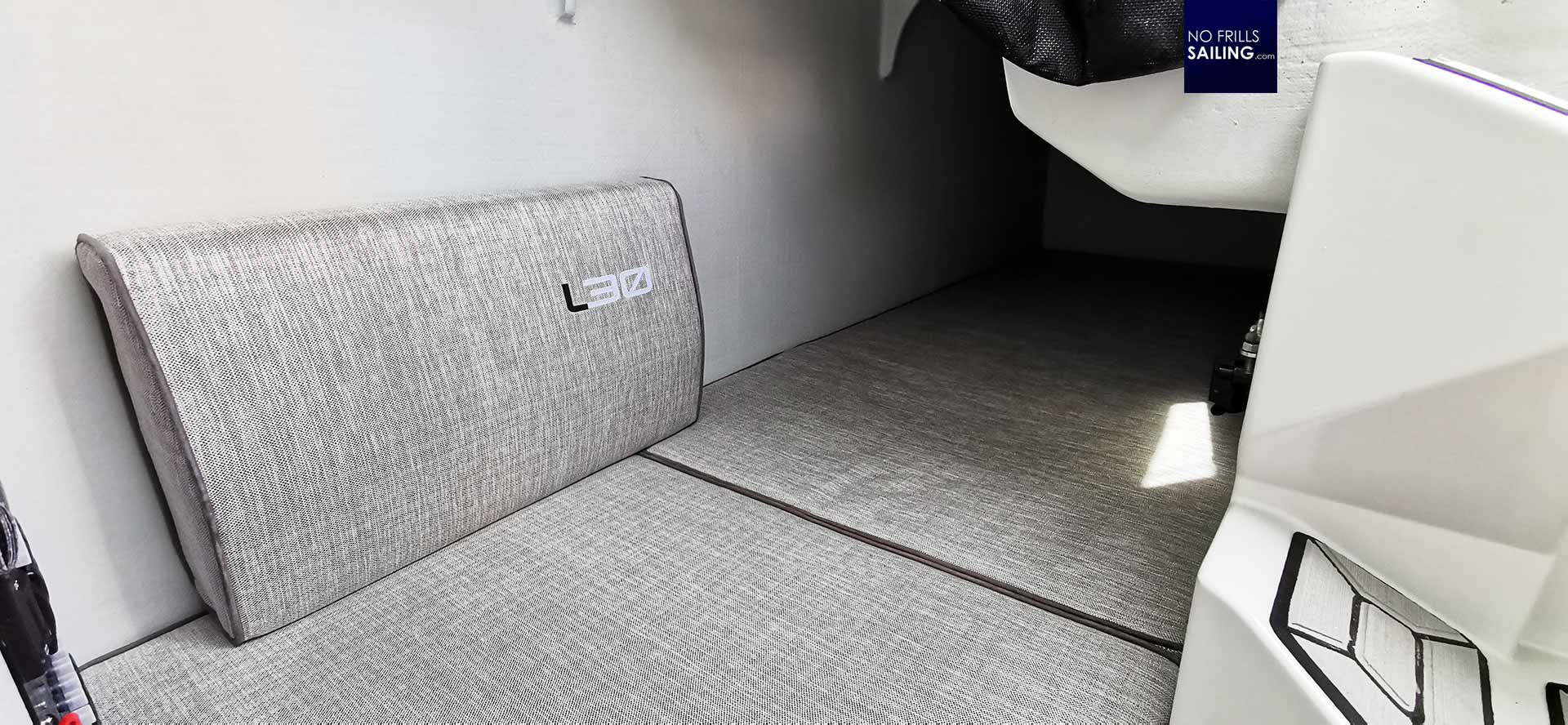
In the bow, to starboard side, one can sit on the berth and work the “navigation station”, which is integrated into the bulkhead of the bathroom. I like the feeling of the boat: The cushions in soft grey are comfortable and the garment appears of a high quality. The EVA-foam flooring, same as in the cockpit, make for a nice, at-home atmosphere and I am sure that the owners can choose from a variety of colors and tones.
Comforts and fitting varieties
In this I am really enthused and excited, because the L30 one design appears to be a “sheep in a wolf´s clothing”, exactly the other way round. The aggressive racer from the outside turns out to be a pretty cozy and lovely designed cruising-capable boat. At first it is a bit strange to have a boat without a dedicated saloon (and indeed, in cold, rainy or generally bad weather you cannot sit together and enjoy a hot meal), but other than that and acknowledging the fact that 90 per cent of the boat life is taking place in the cockpit, this is a pretty nice layout!
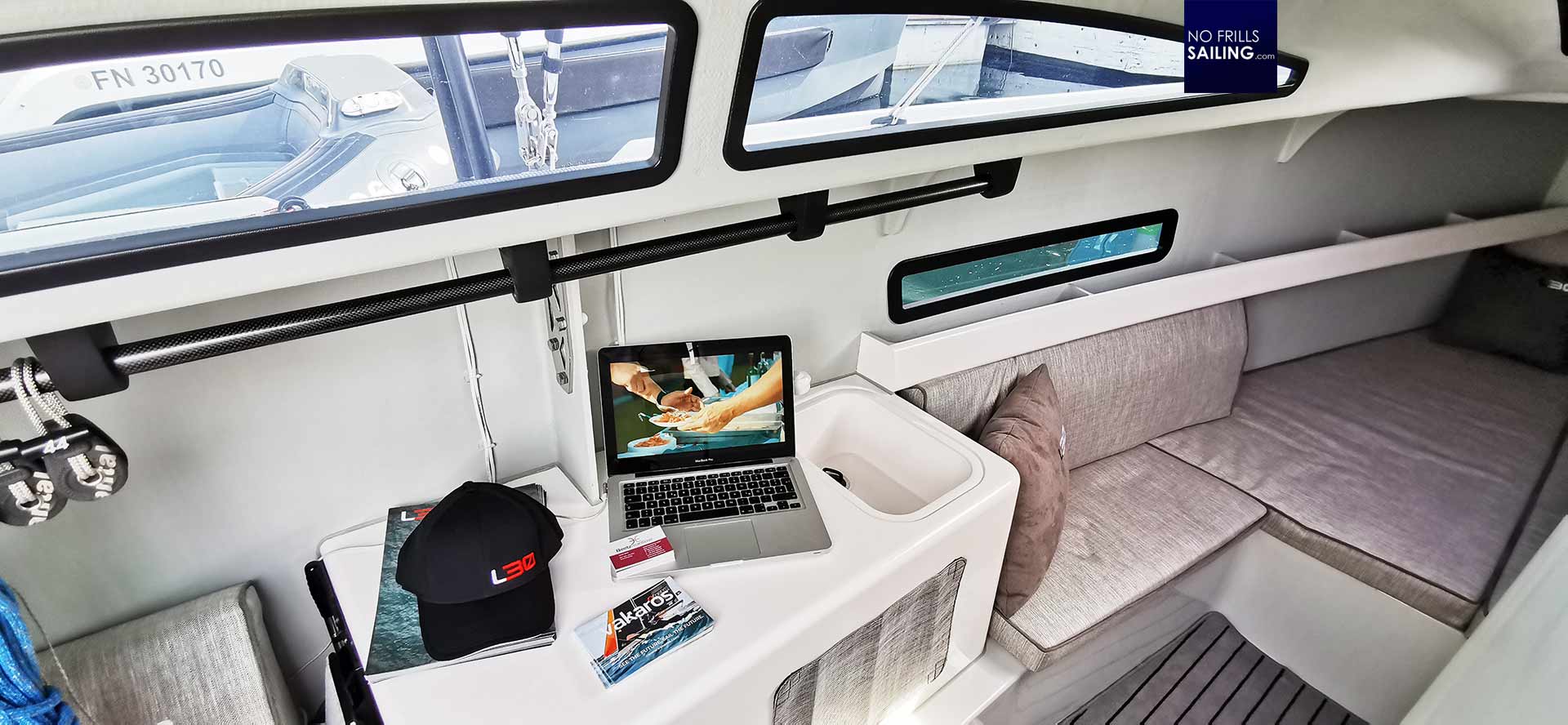
Especially the large hull windows make for a nicely light-suffused interior. Of all the 30 feet racer/cruisers and cruiser/racers I have visited I´d say that the L30 one design has the friendliest of them all. The boat´s “narrow” 2.54 meters in beam are in a way a pro: There is always and at any point a grab handle, a bulkhead or a fitting near to have a safe stand and roam about inside the boat even in heavy weather.
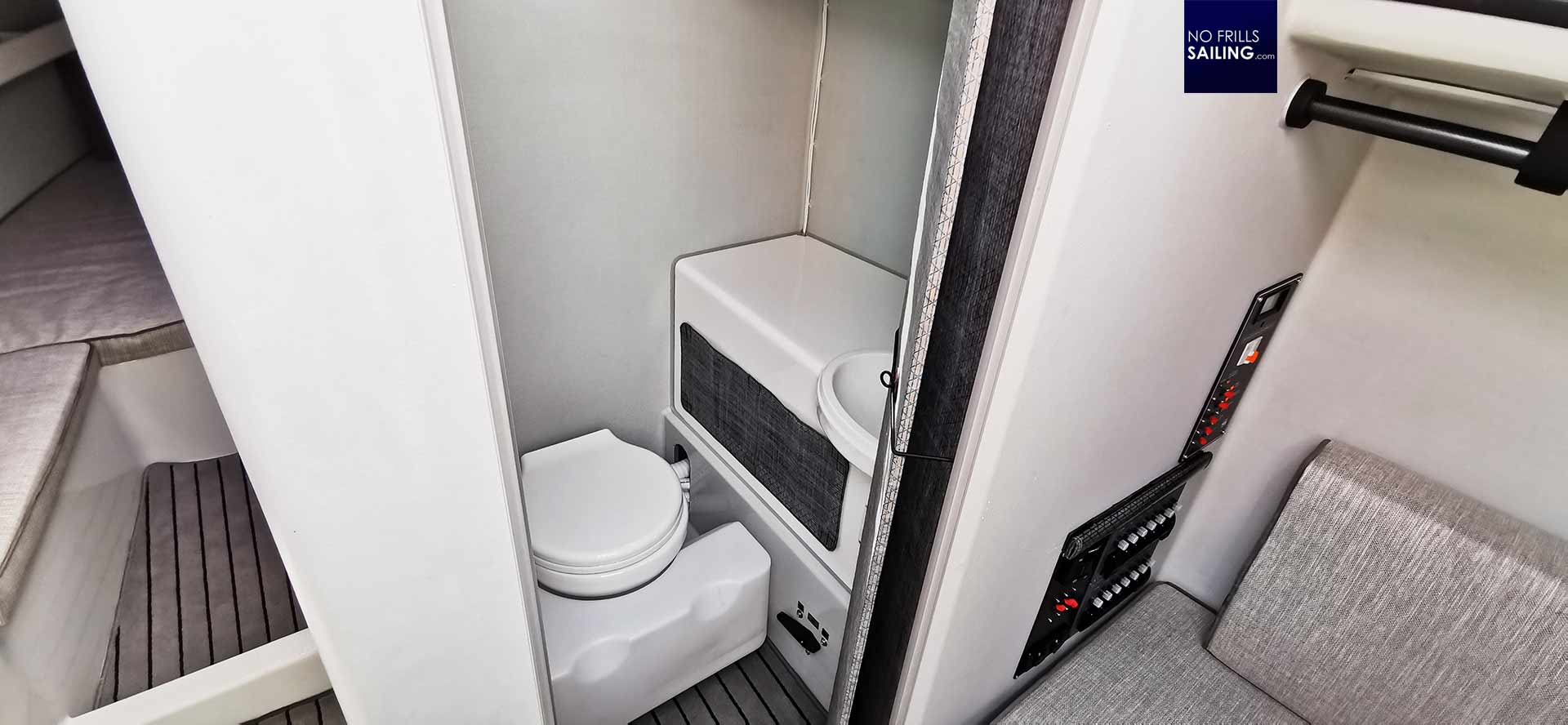
Sacrificing the saloon for a second aft pilot berth and placing the head/WC right at the mast stand is also ingenious: Since the L30 is a boat for crewed racing, that´s one additional berth and no need for hot bunking. Also, at sea, especially in rough conditions, having the WC on to of the keel – the pivot of the boat – is a great thing. We all know the unpleasant rollercoaster up there in the bow or abaft when using the toilet. I suppose it´s much calmer right on top of the keel.
Variable draft on the L30
Another nice feature to talk about in the L30 one design is the lifting keel. Not a swing keel like on my First 27 SE and not a fixed keel: This makes the L30 far more attractive for sailors than the Figaro 3 or the Dehler 30 OD which cannot be self-transported by means of a trailer. Let´s take a closer look onto the lifting keel mechanism in the L30, because I found it was easy, simple and therefore great.
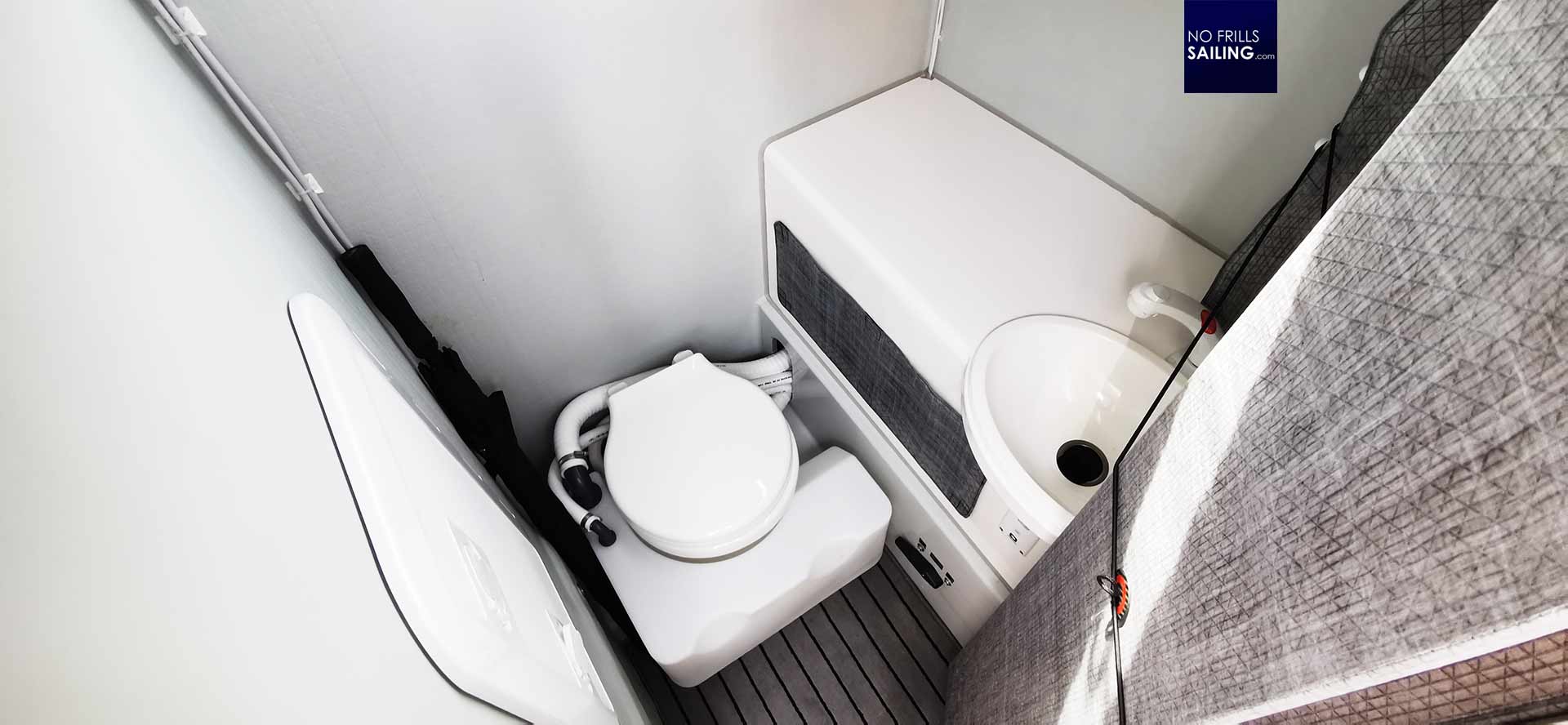
As the keel is a lead bulb on a stainless steel frame, that is encapsulated by an epoxy moulded fin, the lifting of the keel from 1.88 meters max to 0.58 meters retracted is done vertically (no swing mechanism) inside a housing. This housing is, of course, on the longitudinal axis of the boat and makes the “wall” of the bathroom to port side. When inside the bathroom, one notices a large watertight hatch, behind it, as Rodion shows me, is the lifting mechanism.
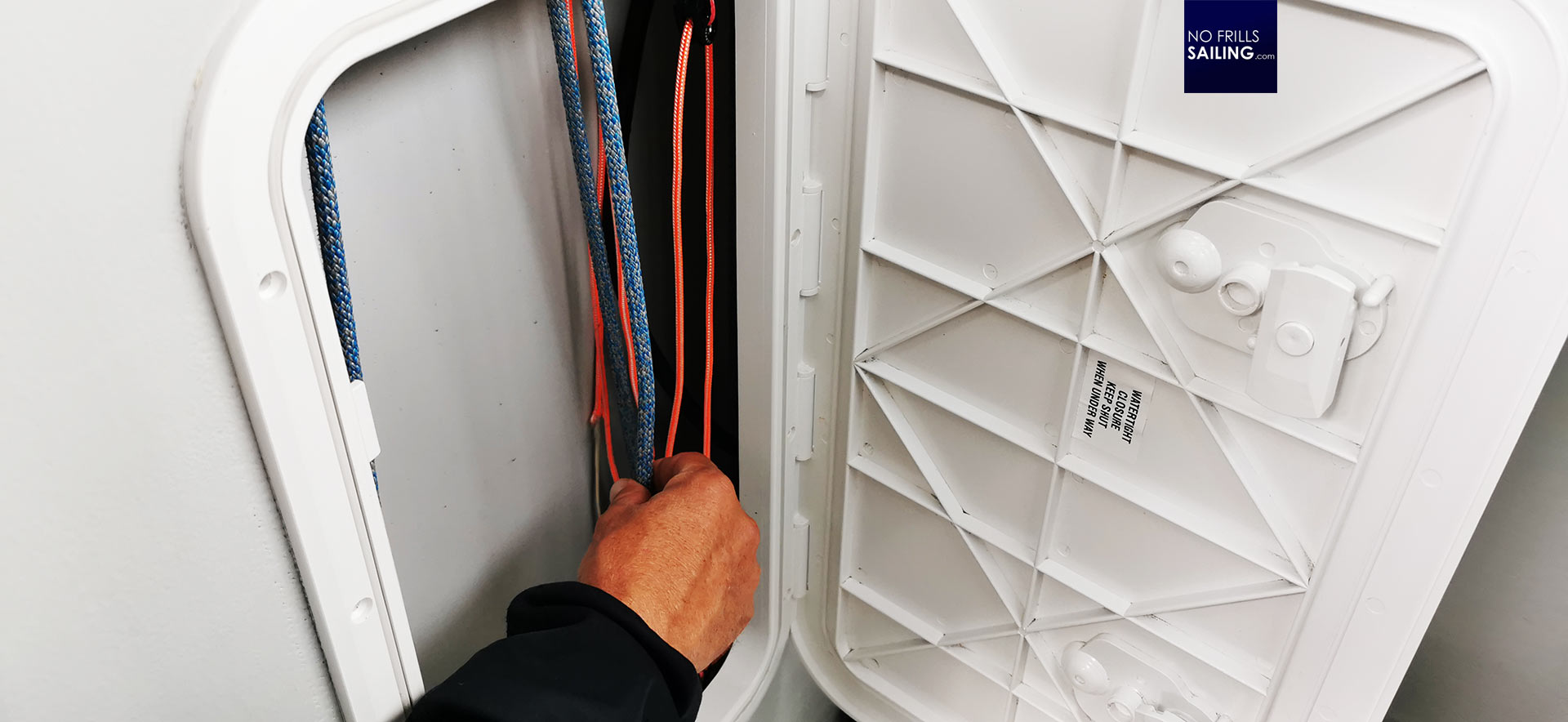
The mechanism consists of a simple Dyneema-lashing on a pulley tackle. The keel does not need a crank system, like on the First 24 SE nor a hydraulic system like on my last boat, the First 27 SE – it is just simply pulling it up or letting it down by gravity. The halyard that will take the keel up leaves the keel housing right on to – emerging outside of the boat on the coach roof.

There, a large roller diverts the line back where, when needed, this line is put on a winch and can be winched up with ease. No motor needed. I found this idea astonishingly simply and ingenious. Everything is done by a hoist and a simple line. I can imagine that this is a pretty maintenance-free and failsafe system.
A very nice boat indeed!
So, all in all I was very surprised by the great quality of the boat, the high rate of cruising comforts down below deck and the overall impression this boat made on me. She is indeed a very nice boat! I personally would have preferred a tiller steering instead of wheels, apart from the more complex mechanical setup to convert steering wheel-helm impulses to the rudder blades, especially in racing the helmsman needs to feel the flow of the water. And this is usually killed off and sedated by wheels. Also, due to the relative narrowness of the boat, those two wheels look a bit awkward – to me.
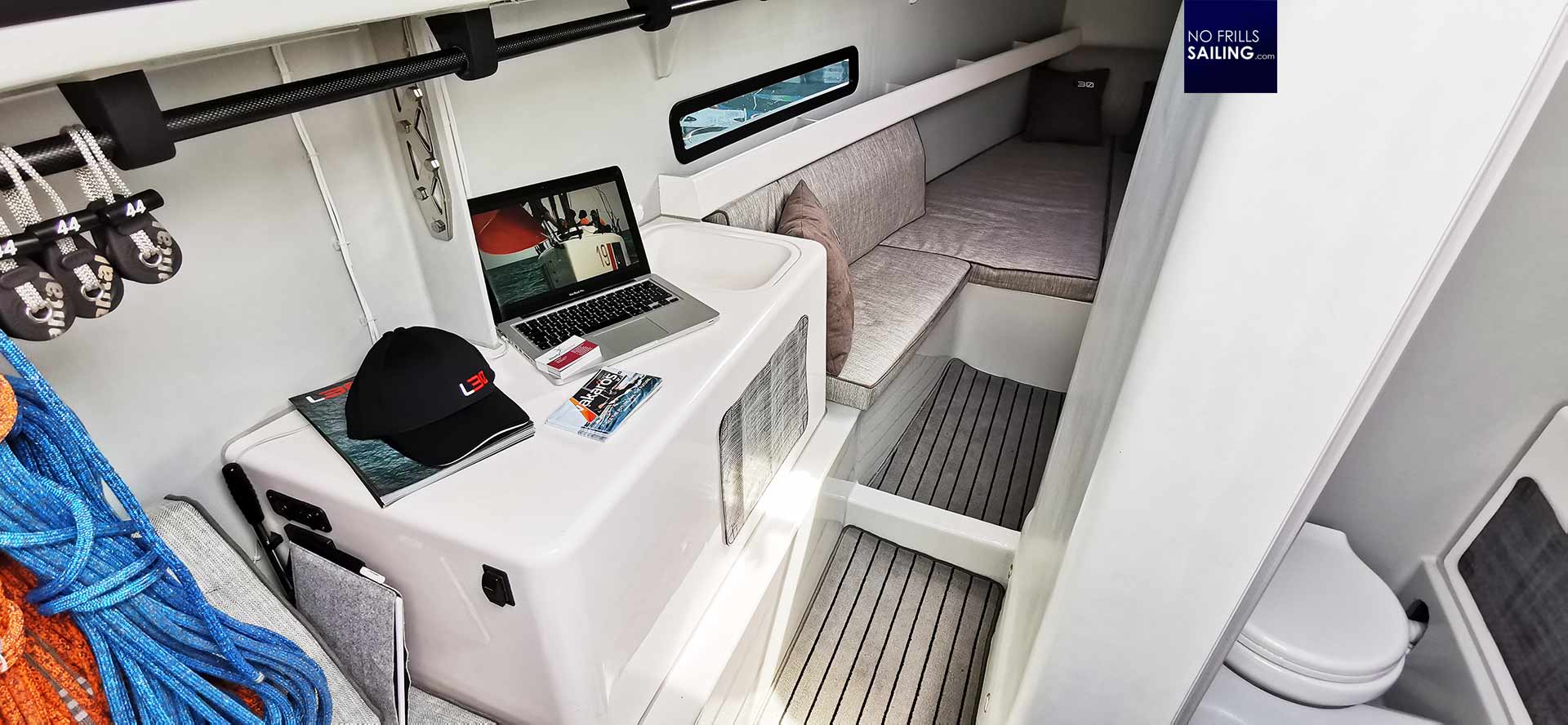
Other than that, I really liked the boat. For people seeking sailing sensations and wanting to combine the thrills of an occasional regatta with the amenities of a cruising boat, the L30 should definitely be on the short list. A big plus is the trailerability and the lifting keel. I would say, all-out racers will have more performant and more race-oriented boats in the Dehler 30 OD, the Figaro 3, or Hans Genthe´s Aeolos P 30, also in the upcoming new SunFast, which we all await eagerly.
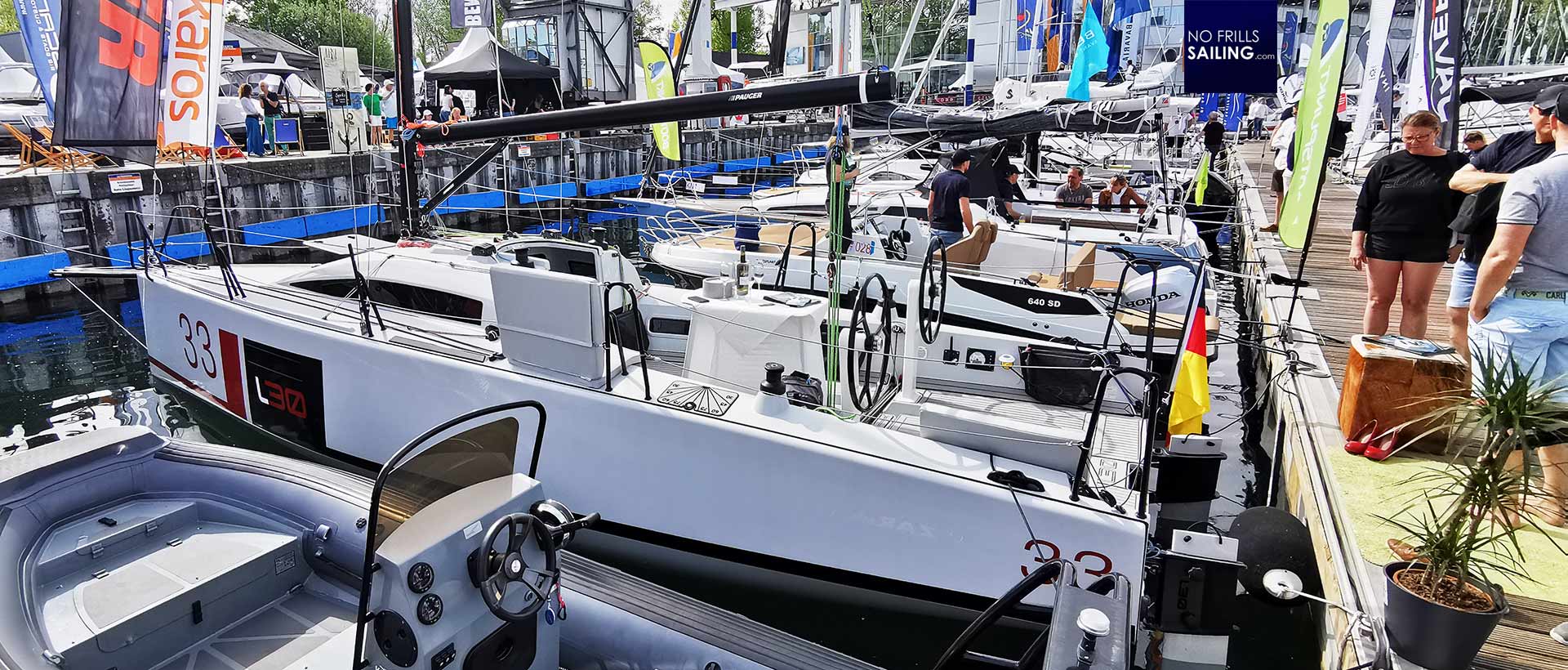
First built by Oceantec in Slovenia, L30s are now built near Lwiw in Ukraine (as Rodion told me production resumes despite the ongoing war) and they are setting up another production facility at the beautiful Balaton Lake in Hungary. Which, I guess, will secure the production and shouldn´t be a factor that prohibits sales of this boat. I thanked Rodion for the tour of his interesting sailboat and I hope, maybe this year, when I return to the Lake of Constance, Jochen Beetz, German importer, will take me out for a little show-run on one of his new L30s for a seatrial. I will surely report on that event!
You may as well like to read these related articles:
30 feet racing rocket made in Germany: Dehler 30 OD
Ofcet 32 – outside the box
Figaro 3: The foiling machine, seen in the yard in Nantes
